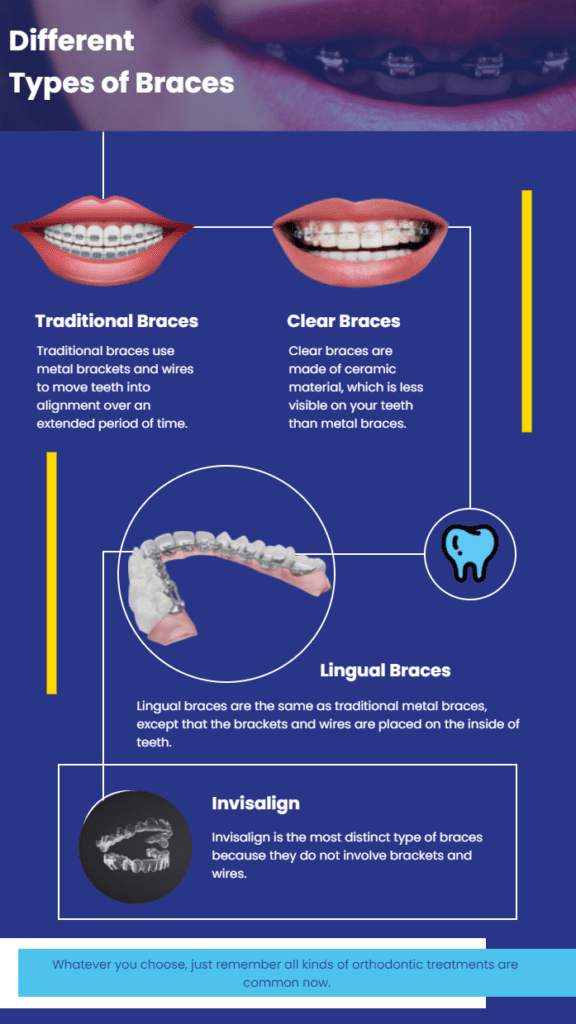Comprehensive Guide to Orthodontics Procedures for Remedying Dental Misalignments
Understanding the ins and outs of each treatment, including their devices, advantages, and prospective downsides, is critical in making notified choices regarding one's orthodontic therapy. As we browse through the comprehensive overview to orthodontic treatments for fixing dental misalignments, the elaborate details of each method will certainly unfold, dropping light on the path towards a unified and practical oral placement.
Orthodontic Procedures Overview

Regular changes and monitoring are critical parts of orthodontic treatment to make certain development is on track and to make any type of essential adjustments along the method. By going through orthodontic procedures, clients can not only achieve a straighter grin however likewise boost their overall dental wellness and feature.
Conventional Braces: How They Work
When taking into consideration orthodontic therapies for oral misalignments, traditional dental braces stand out as a time-tested technique for dealing with teeth positioning. Conventional dental braces consist of braces, wires, and bands that work together to apply continual pressure on the teeth, slowly relocating them right into the desired alignment.
One trick element of exactly how typical braces work is the process of bone remodeling. As stress is applied to the teeth via the braces, the bone surrounding the teeth is reshaped to sustain the brand-new tooth placements. This makeover is essential for the long-lasting stability of the corrected placement. People will certainly require regular adjustments at the orthodontist's workplace to ensure the braces remain to use the correct stress for effective teeth motion.
Undetectable Aligners: Advantages And Disadvantages
Unnoticeable aligners use a hassle-free and discreet alternative to traditional braces for fixing dental imbalances. These clear, custom-made trays are basically unseen when used, making them an attractive option for individuals seeking a more visually pleasing orthodontic therapy. One of the primary benefits of undetectable aligners is their removability, enabling less complicated upkeep of dental health contrasted to typical dental braces. Individuals can get rid of the aligners before eating or cleaning their teeth, lowering the risk of food obtaining stuck in the device and simplifying the cleaning process.

Surgical Orthodontic Options
Surgical treatments in orthodontics existing viable choices for addressing complex oral misalignments that might not be efficiently dealt with via standard orthodontic treatments. While traditional braces and undetectable aligners can fix several orthodontic concerns, particular cases need medical intervention to attain optimal results. Surgical orthodontic options are usually recommended for serious malocclusions, substantial jaw inconsistencies, and situations where the underlying bone structure needs adjustment to accomplish correct positioning.
One common surgical orthodontic procedure is orthognathic surgical treatment, which includes repositioning the jaws to deal with useful issues such as difficulty speaking or eating. This surgery is frequently executed in partnership with an orthodontist that assists straighten the teeth prior to and after the procedure. Surgical orthodontics may likewise entail treatments to reveal influenced teeth, remove excess periodontal tissue, or improve the jawbone to produce a more harmonious facial profile.
Prior to taking into consideration medical orthodontic choices, clients go through a detailed examination to establish the requirement and potential benefits of such treatments. aligners. While surgical procedure might seem daunting, it can dramatically improve both the feature and looks of the smile in situations where traditional orthodontic therapies drop short
Retainers and Post-Treatment Care

Post-treatment treatment entails following the orthodontist's visit this page instructions carefully. This might consist of proper dental hygiene methods, going to follow-up consultations, and wearing the retainers as suggested. Failing to abide by post-treatment treatment directions can result in regression, where the teeth gradually return in the direction of their initial placements. Consistent retainer wear, good dental health, and regular dental check-ups are crucial for keeping the results accomplished via orthodontic surgical procedure and guaranteeing the long-lasting stability of the corrected dental placement.
Final Thought
To conclude, orthodontic procedures use various choices for remedying click to read dental imbalances. Typical braces use metal brackets and cables to change teeth right into correct positioning. Unseen aligners supply a more very discreet choice but might not be appropriate for all cases. Surgical orthodontic choices are readily available for much more serious misalignments. Retainers are frequently utilized post-treatment to maintain the brand-new positioning. On the whole, orthodontic treatments can successfully enhance oral health and aesthetic look.
As we browse with the thorough overview to orthodontic procedures for dealing with oral misalignments, the intricate information of each approach will certainly unfold, dropping light on the course towards a unified and functional dental positioning. - braces
One of the most common orthodontic therapies is the use of braces, which are composed of metal braces and cords that use gentle stress to gradually shift teeth into the desired setting.When thinking about orthodontic therapies for dental misalignments, standard braces stand out as a tried and true approach for dealing with teeth placing. Furthermore, unnoticeable aligners may not be suitable for complex orthodontic problems that need even more considerable teeth activity, as they are usually suggested for mild to moderate cases. Retainers are personalized orthodontic devices created to hold teeth in their corrected placements after the completion indental of orthodontic treatment.